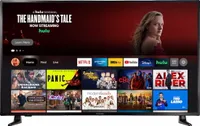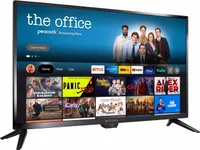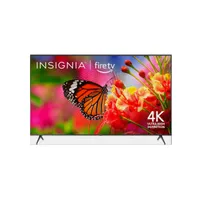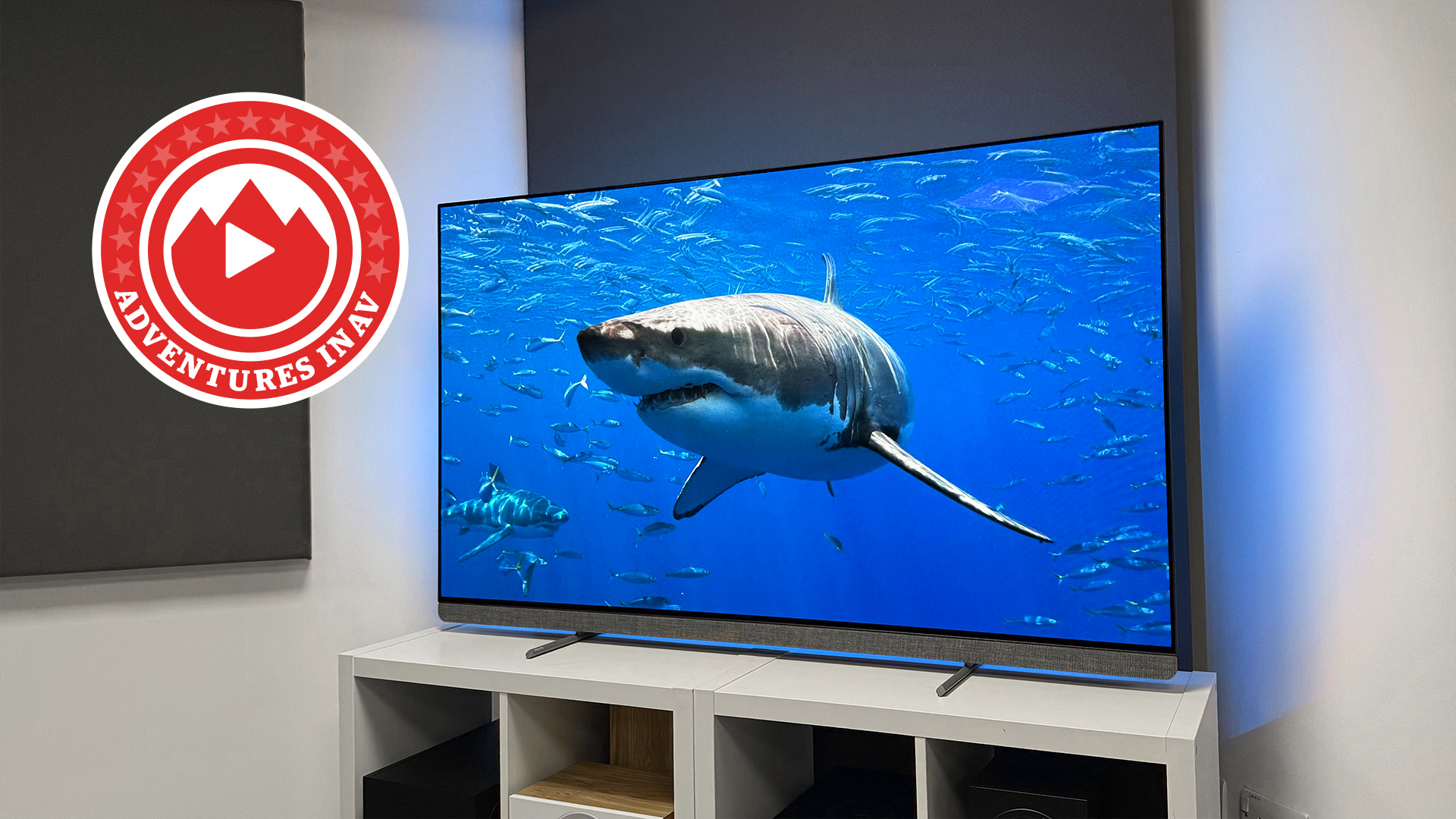Should you buy an Insignia TV? Are they any good?
Spotted an Insignia TV deal? Here's your A-Z of Insignia TV models
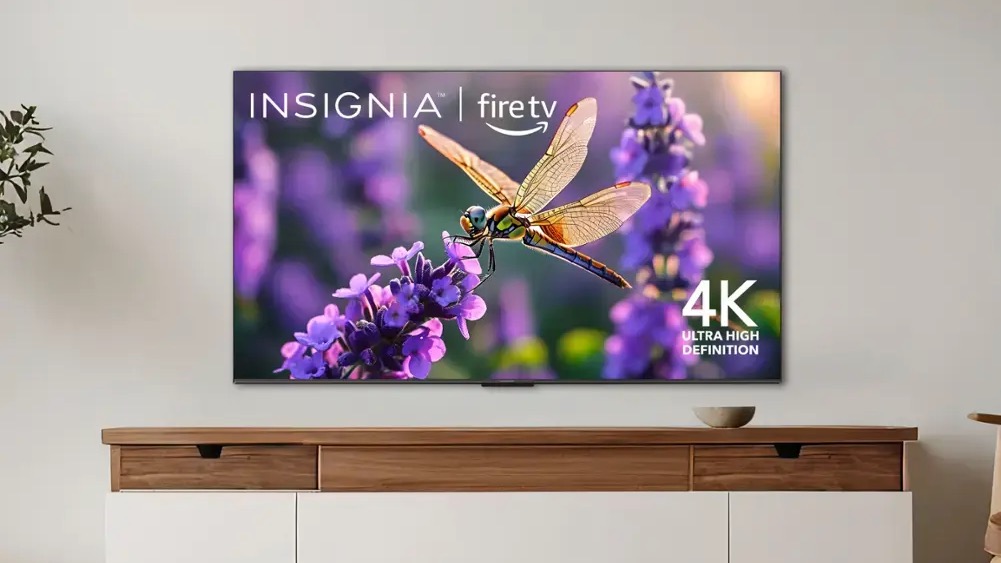
Insignia is Best Buy’s in-house electronics brand. It produces all kinds of tech from fridges and driers to phone chargers, shredders and massage chairs (yes, really). But it's best known for its TVs. These are firmly at the budget end of the market, and compete with the likes of TCL, Toshiba, Hisense, and Amazon.
Insignia currently sells three Series: the F20, F30 and F50. Each comes in a range of sizes, with different features and screen panel technologies. But even Insignia's biggest and best TVs come in at well under $1000.
Which prompts the question: are they worth the outlay? What features do they offer, and how do they differ from the models offered by other budget TV brands? While we haven't reviewed these TVs ourselves, we can use our comprehensive industry knowledge to know what's a good deal and what to avoid. So let's see how Insignia's TV series stack up.
- Our pick of the best TV deals
- Shop smart: browse the full Insignia TV range on Best Buy
- Check out every Insignia TV on Amazon
What do Insignia TVs offer?
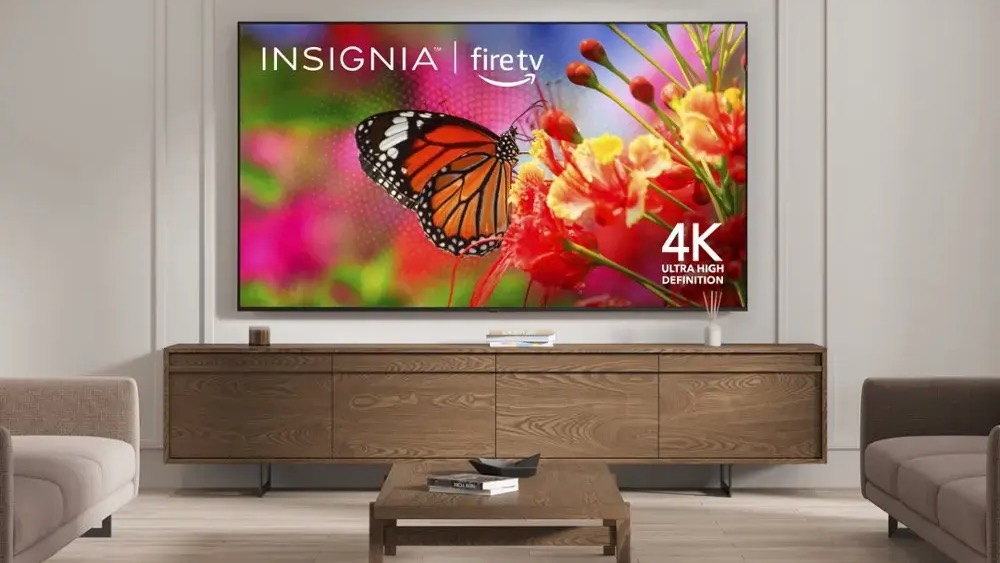
Insignia's current selection of TVs range from 24 inches all the way up to 85 inches. So whether you want a theater-sized screen for the front room, or a tiny TV for your kitchen counter, one of its models might suffice. They range in price from a little over $100 to $600 (at time of writing its top-of-the-range TV is reduced from its usual price of $800). Because of these low prices, there are some compromises.
Gamers miss out on the ALLM and VRR features, while refresh rates are capped at 60Hz (not the 120Hz or even 144Hz of pricier TVs). While some models do support HDR, this is limited to HDR10 and HLG – there's no Dolby Vision, HDR10+ or HGiG. They also lack Dolby Atmos audio (those Dolby licenses cost a pretty penny), but some models do offer DTS Stereo Sound.
They also use LED panels, instead of the superior OLED. LED is a type of LCD.
It's not all bad news though. Some models come with 4K picture quality, and gamers can plug in multiple next-gen consoles at once using some models' three HDMI 2.1 ports. Even Insignia's smallest and cheapest models come with a full suite of streaming apps too, like Netflix, Disney Plus, Apple TV+, Prime Video, Max and Peacock.
The latest hi-fi, home cinema and tech news, reviews, buying advice and deals, direct to your inbox.
They also run Amazon's Fire TV platform, which gives them voice control skills courtesy of Amazon's Alexa. For a TV costing a little over $100, that's quite some nice-to-have.
Should you buy an Insignia F20 Series Fire TV?
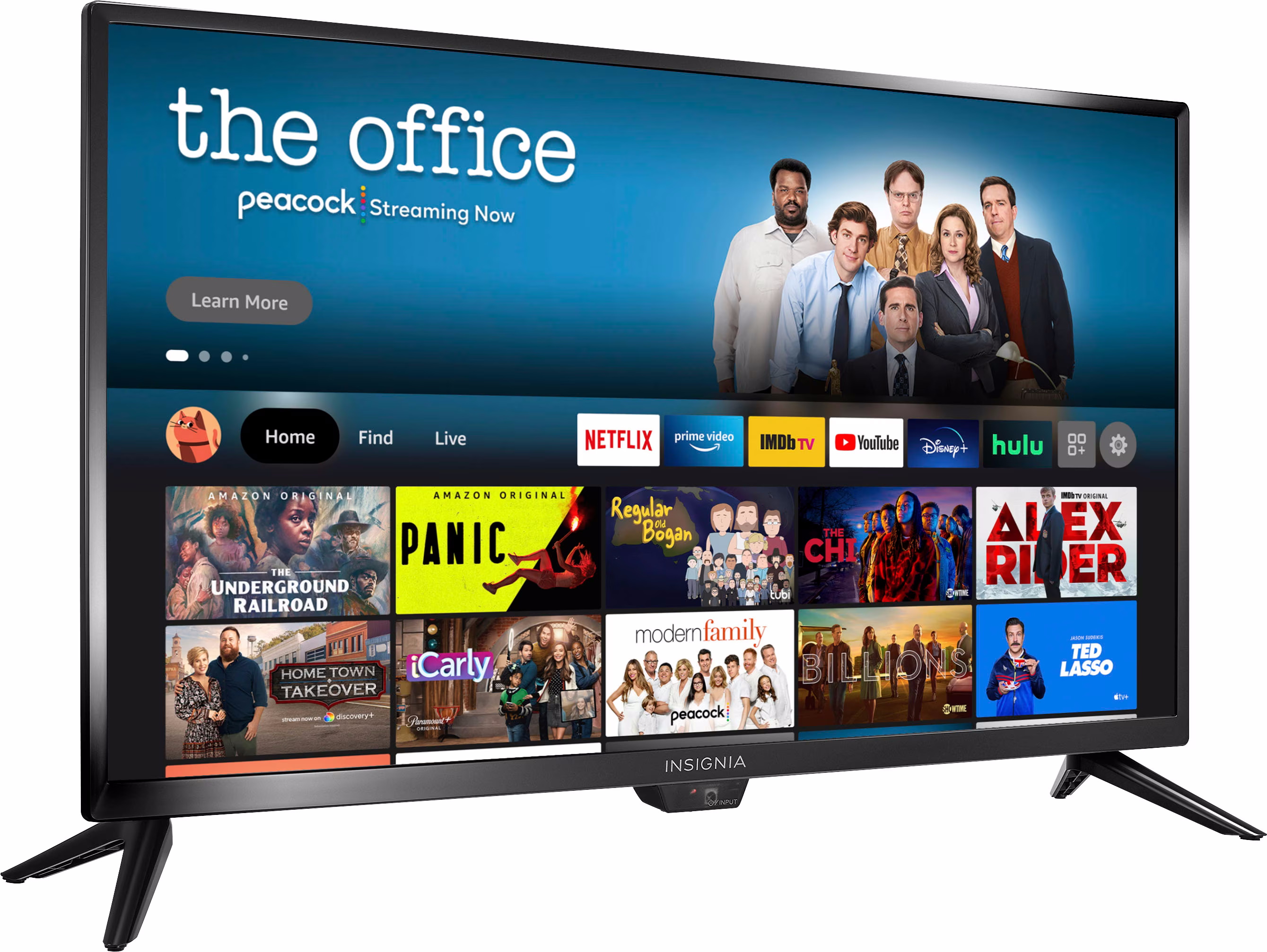
- Sizes: 24-inch, 32-inch, 42-inch
- Display type: LCD
- Resolution: 720/1080p HD
- Refresh rate: 60Hz
- HDR: None
- Audio: DTS Studio Sound
- HDMI: ARC
The F20 Series is Insignia's cheapest and most basic of its current models. You can choose from 720p or 1080p HD – though it's not a simple case of the more you pay, the more advanced technology you get, as the 32-inch model has actually dropped cheaper than the 24-incher in the past, and has a 720p HD screen to the 24-incher's 1080p HD. Go figure.
Like Insignia's other TVs, these two and the 42-incher run Amazon's Fire OS operating system, and have a 60Hz refresh rate. Apple AirPlay is onboard for wireless connectivity, and there are three HDMI sockets. Bluetooth 5 is also there, adding to its wireless skills.
At time of writing, the 32- and 42-inch models in the F20 Series are discounted by $40. The 24-inch variant is $69, the 32-incher $79 and the 42-incher $129.
Should you buy an Insignia F30 Series Fire TV?

- Sizes: 43-inch, 50-inch, 55-inch, 58-inch
- Display type: LCD
- Resolution: 4K
- Refresh rate: 60Hz
- HDR: HDR10
- Audio: DTS Studio Sound
- HDMI: ARC
The F30 Series is the middle child in Insignia's family. Like the F20, TVs in this range have LCD screens with 60Hz refresh rates. But all models take the step up to the 4K resolution and support HDR10.
They do lack fancier features like HDMI eARC, VRR and OLED panel technology. But given the pricing, that's to be expected.
The range starts at 43 inches ($149, reduced from $199), and comprises a 50-inch model ($189, down from $299), 55-incher ($209, down from $349) and a 58-inch model ($259, down from $379).
This combination of features and price is about what you’ll see from other budget manufacturers’ flagship TVs – those from TCL and Hisense and the like offer similarly specced, similarly sized sets for around the same prices.
Should you buy an Insignia F50 Series Fire TV?
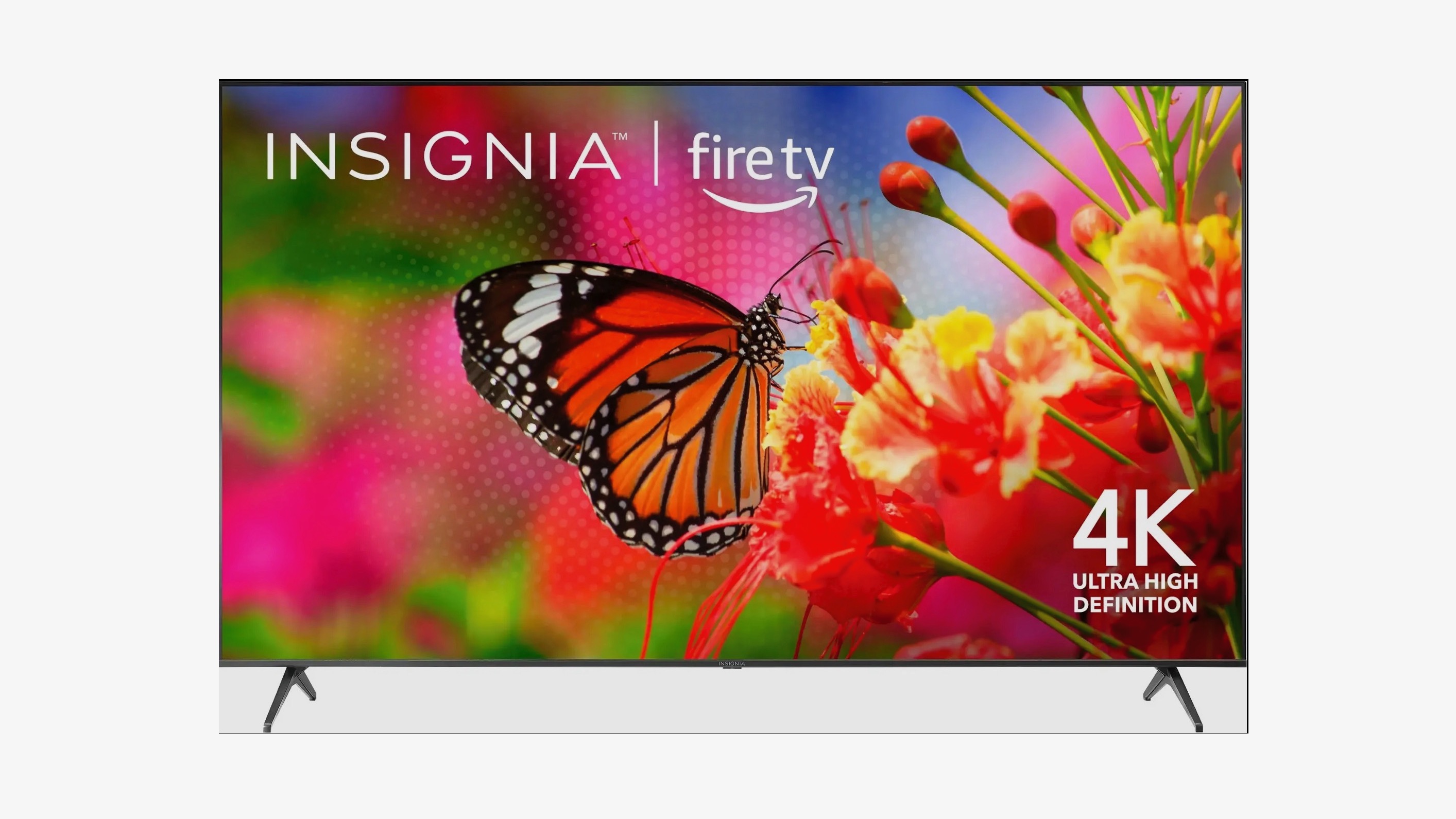
- Sizes: 65-inch, 70-inch, 75-inch, 85-inch
- Display type: LCD
- Resolution: 4K
- Refresh rate: 60Hz
- HDR: HDR10, HLG
- Audio: DTS Studio Sound
- HDMI: eARC
Insignia's biggest and best TVs are found in the F50 Series. Screen sizes start at 65 inches, and all models are 4K with 60Hz refresh rates. But these TVs add the Hybrid Log Gamma (HLG) format of HDR as well as HDMI eARC (which should result in higher-quality audio from a soundbar or surround sound system).
Screen sizes go up to a massive 85 inches. And with three HDMI 2.1 ports to hand, gamers will be able to plug in multiple next-gen consoles/gaming PCs and a soundbar/AV receiver at the same time without compromising performance.
And the price? Not nearly as high as you might expect. The 65-inch model costs $299, the 70-inch $379, the 75-incher $449 and the 85-incher $629. Considering the 65-inch Amazon Fire TV Omni Series costs $639, the Insignia F50 Series looks very tempting indeed.
So, should you buy an Insignia TV? Are they worth it?

Let's keep our expectations in check: Insignia TVs aren't going to rival the best Sony TVs, best Samsung TVs or best LG TVs for the crown of best TV overall. In terms of performance, they're unlikely to rival even mid-range models like the LG C5. But for the money, they do promise a lot of bang for your buck.
With Insignia's TVs, the more you spend, the bigger screen you get, so the F20 Series spans 24 to 42 inches, the F30 Series 43 to 58 inches, and the F50 Series 65 to 85 inches.
If you have less than $100 to spend, the 24-inch F20 looks like a great option, with streaming apps and a 1080p HD resolution. But just $80 more will get you the entry-level 4K model at 43 inches. And if you can stretch to the F50 Series, you'll see the benefit of better HDR support, better HDMI support, and higher-quality audio through a soundbar or surround system courtesy of HDMI eARC.
Of course, a disclaimer applies. Without having tested these TVs, we can't vouch wholeheartedly for their picture quality. To see which models we definitely recommend, check out the best budget TVs.
But judging from the specs, features list and the many positive reviews from customers online, an Insignia TV looks to be a solid, cost-effective way to bring a smart TV into your home. So long as you don’t mind the Amazon OS.
Best Insignia TV deals
Insignia 50-inch F30 TV was $299 now $189 (save $110)
Get yourself 50-inch smart TV for under $200. Enjoy all your favorite streaming services thanks to Amazon's Fire TV OS, and enjoy modern picture quality thanks to 4K/HDR support.
Insignia 42-inch F20 TV was $179 now $129 (save $50)
There's a decent $40 saving on this 42-inch HD model. Which makes it just $30 more than the 24-incher. A steal.
Insignia 85-inch F50 TV was $899 now $629 (save $270)
Insignia's flagship TV has a massive reduction right now. That's a stunning price for an 85-inch TV with 4K, HDR and HDMI eARC.
Frequently asked questions
Are Insignia TVs smart TVs?
They are. Insignia used to have a range called the N10 which didn't have smart skills, but that has since been retired. Now the F20, F30 and F50 all run Amazon's Fire TV platform, giving you all the usual streaming apps and Alexa voice controls to boot.
Which is better, Insignia or TCL?
Insignia and TCL are both popular brands targeting the budget end of the market, and oftentimes, if you're looking for a deal, you may well be choosing between a TCL set and an Insignia set.
TCL makes a lot of Roku TVs, while Insignia makes Fire TVs. If you prefer the Amazon ecosystem, go with Insignia, and if you like Roku more, go with TCL. Depending on what services you already use, one may be a better fit for you than another.
In general, though, if you aren't comparing TVs with the same spread of features, some TCL sets will offer extra features like full-array local dimming and VRR. More basic sets tend to be cheaper over at Insignia, while if you're willing to pay a bit more, TCL tends to offer more for your money.
Depending on what you're looking for out of a TV, you may prefer the fuller feature set of TCL; however, some will prefer the Fire TV experience of Insignia and may not care about more niche gaming features like VRR.
Which is better, Insignia or Hisense?
Hisense is another brand that usually targets the budget end of the market, and oftentimes, if you're looking for a deal, you may well be choosing between a Hisense set and an Insignia set.
As is the case with TCL, some Hisense and Insignia TVs will be similar in terms of specs and prices. One of the differences that might swing your decision could be the operating system they use, whether that's Google TV and Hisense or Insignia and Fire TV.
However, in general, Hisense TVs tend to be a bit more expensive than Insignia TVs. Though, you will be able to find Hisense TVs with more features than Insignia TVs, including IPS panels and VRR support.
So, if you're looking for a simple TV at the lowest price, you might look at Insignia, and if you're looking for a budget TV with the most competitive features, you're more likely to be swayed by Hisense.
MORE:
Check out more of the best cheap TV deals
Should you buy a TCL TV? Our verdict on TCL Roku TVs
Find out how to choose the right TV
Joe has been writing about tech for 20 years, first on staff at T3 magazine, then in a freelance capacity for Stuff, The Sunday Times Travel Magazine (now defunct), Men's Health, GQ, The Mirror, Trusted Reviews, TechRadar and many more. His specialities include all things mobile, headphones and speakers that he can't justifying spending money on.
